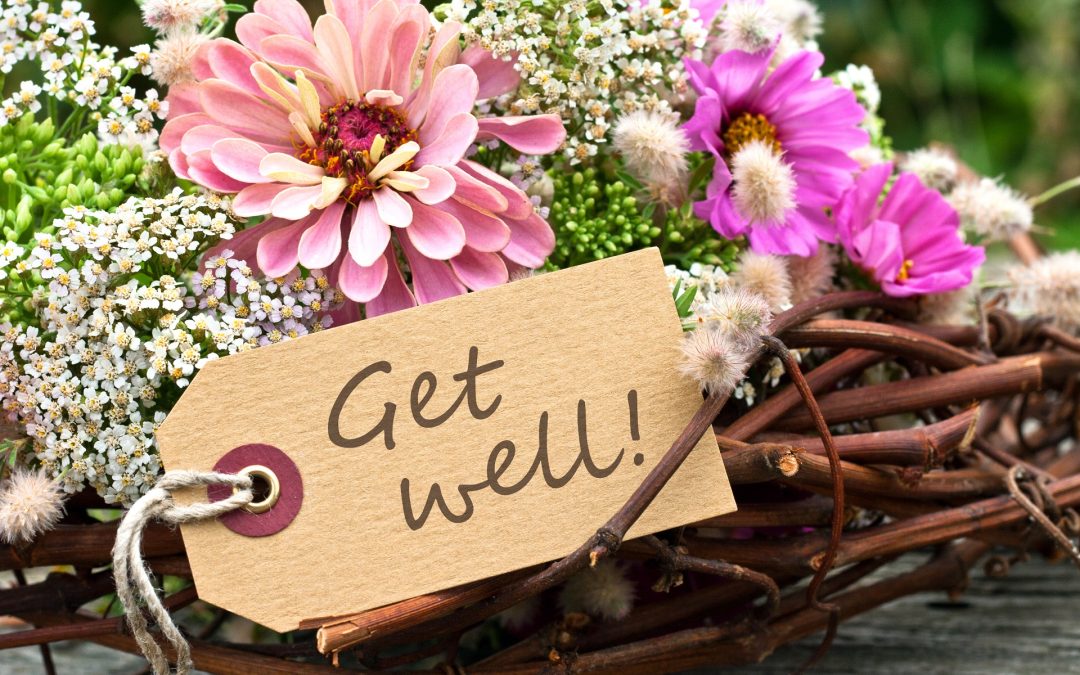In moments of illness or recovery, a thoughtful gesture can go a long way toward brightening someone’s day and boosting their spirits.
And this is just as true here in the Ozarks as anywhere else.
Sending get well flowers is a timeless way to convey your wishes for a quick recovery.
With that being said, navigating the nuances of this thoughtful act can sometimes prove to be a daunting affair.
When should you send them? What types of flowers should you send? How should you go about choosing the right bouquet?
These are all questions that can be surprisingly difficult to answer.
Whether you’re considering sending a floral arrangement to a friend recuperating at home or a family member in the hospital, understanding the etiquette, choosing the right types of flowers, and knowing the best time to send them are crucial steps in making your gesture as meaningful as possible.
And to help you with this endeavor, we’ve compiled some of the most important pieces of advice to get you started.
Let’s dive into it.
Understanding Get Well Flower Etiquette
Etiquette is key when sending get well flowers, as it reflects your sensitivity towards the recipient’s situation.
Here are a few guidelines to consider:
Know the Recipient’s Situation: Before sending flowers, make sure the recipient is not allergic to pollen or certain types of flowers. Also, remember that some hospitals have restrictions on flower deliveries due to allergy concerns.
Consider the Message: The message accompanying your flowers should be uplifting and considerate of the recipient’s condition. A simple “Wishing you a speedy recovery” or “Thinking of you” can be very comforting.
Respect Privacy: Always send flowers to a home address unless you are sure the recipient is accepting visitors and gifts at their location of recovery, such as a hospital.
Choosing the Right Types of Flowers
The type of flowers you choose can significantly impact your gesture’s warmth and sincerity.
While personal preference should guide your selection, some flowers are more traditionally associated with health and recovery:
- Bright and Cheery: Sunflowers, daisies, and gerberas in vibrant colors can lift spirits with their cheerful appearance.
- Soothing and Calming: Lavender, chamomile, and roses in soft pastel colors promote relaxation and a peaceful atmosphere.
- Low Maintenance: Consider sending potted plants like succulents or blooming plants such as orchids for recipients who may appreciate a longer-lasting reminder of your care.
When choosing the right types of flowers to send as a get-well gesture, it’s also essential to keep a few additional key considerations in mind for maximum impact and sincerity.
Opting for seasonal flowers can be a great choice as they are often fresher, more affordable, and can bring the beauty of the current season into the recipient’s space, whether it’s tulips in the spring or chrysanthemums in the fall.
The symbolism of flowers also plays a crucial role; selecting blooms that represent hope, healing, and renewal, such as peonies for healing or daffodils for new beginnings, adds a deeper meaning to your gift.
It’s also wise to choose flowers with little to no fragrance to ensure comfort, especially in confined spaces where strong scents might be overwhelming.
If you’re sending flowers to a hospital, consider arrangements that come with their own vase for convenience and immediate enjoyment. Personalizing your gesture with a heartfelt note or a small additional gift, like a cozy blanket, shows extra thought and care.
And finally, for longevity, flowers like alstroemeria, chrysanthemums, or lilies are excellent choices as they stay fresh longer, ensuring your thoughtful gesture continues to bring comfort and joy throughout the recipient’s recovery process.
When Is the Best Time to Send Get Well Flowers?
Timing your flower delivery can enhance its impact. Consider these tips:
After Surgery: Wait a day or two to ensure the recipient is stable and in a position to enjoy your gift.
During Recovery at Home: Sending flowers right after someone returns home can be a great way to uplift their spirits and show that you’re thinking of them.
Long-Term Recovery: For prolonged recoveries, consider timing your flower delivery a few weeks after the incident or surgery to remind the recipient that you’re still thinking of them and their recovery.
Additional Tips for Sending Get Well Flowers
- Personalization: Adding a personal touch, like a favorite flower or color, can make your gift even more special and thoughtful.
- Professional Help: Don’t hesitate to ask a florist for advice on choosing the right flowers and arrangement, especially if you’re looking for something hypoallergenic or particularly soothing.
- Delivery Considerations: Ensure the delivery time is convenient and respectful of the recipient’s rest periods, especially in hospital settings.
Conclusion
Sending get well flowers is a beautiful tradition that, when done thoughtfully, can offer comfort and joy during challenging times.
And by following these guidelines, you can ensure your gesture is both meaningful and appropriate, providing a bright spot in the recipient’s recovery process.
Plus, don’t forget—if you need any help choosing the perfect flowers to send to your loved one, we’d love to be of assistance. Stop in here at Linda’s and we’ll get you started.

